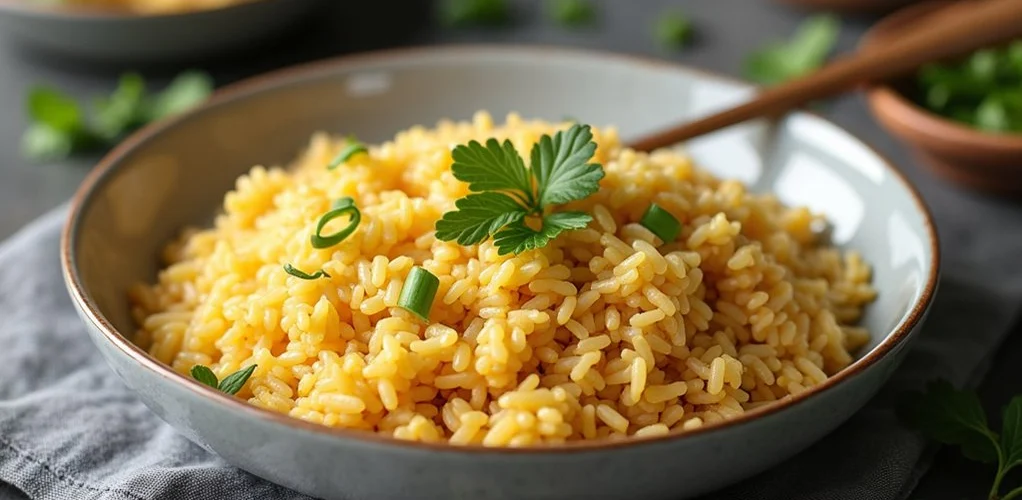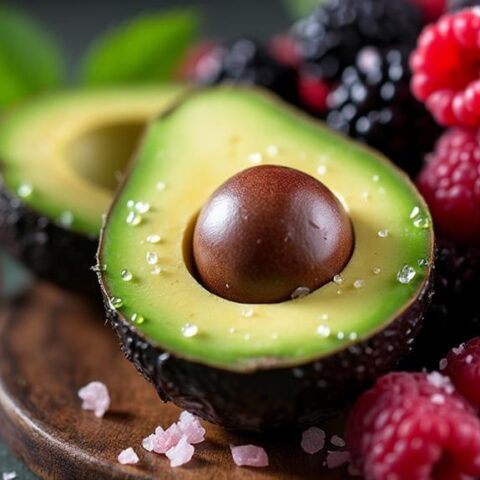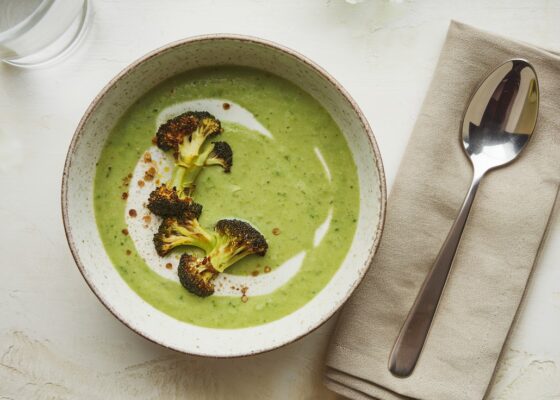
Wild rice is not a low-carb food, despite its reputation as a healthy grain alternative. With 35 net carbs per 100 grams, it contains considerably more carbohydrates than true low-carb options like cauliflower rice. However, its lower glycemic index of 45, high protein content (14g per 100g), and abundant fiber make it a more nutritious choice than white rice. Understanding proper portion control and cooking methods can help integrate this nutrient-rich grain into a balanced diet plan.
Key Takeaways
- Wild rice contains 75g of carbohydrates per 100g dry serving, making it unsuitable for strict low-carb diets.
- A half-cup serving of cooked wild rice provides 18 grams of carbs, requiring portion control for carb-conscious individuals.
- Despite its natural origins, wild rice has more net carbs (35g/100g) than true low-carb alternatives like cauliflower rice (5g/100g).
- Wild rice's moderate glycemic index of 45 and high fiber content make it healthier than white rice but not low-carb.
- Those seeking low-carb alternatives should consider cauliflower rice, shirataki noodles, or konjac rice instead of wild rice.
Understanding Wild Rice: Beyond the Name
Misconceptions about wild rice often lead to dietary confusion among health-conscious individuals. Despite its name, wild rice isn't actually rice at all, but rather the seed of an aquatic grass species with distinct nutritional properties.
Wild rice challenges common dietary assumptions, being not rice but an aquatic grass seed with unique health benefits.
This fundamental difference sets it apart in the low carb discussion, as its unique composition offers advantages over traditional rice varieties.
With a glycemic index of 45, wild rice provides better blood sugar control compared to conventional rice options. Its exceptional nutritional profile includes a complete protein structure, featuring all essential amino acids, which is particularly valuable for those following specialized diets.
The grain's firm texture and nutty flavor profile further distinguish it from common rice varieties, making it a versatile ingredient for health-conscious cooking while maintaining portion control.
Carbohydrate Content Analysis
The carbohydrate profile of wild rice reveals its true position in the low-carb spectrum, containing 75g of carbohydrates per 100g dry serving, which places it considerably higher than traditional low-carb alternatives.
While wild rice offers a favorable glycemic index of 45 and impressive protein content of 14g per serving, these benefits must be weighed against its substantial carbohydrate load for those following carb-restricted diets.
When compared to other rice varieties, wild rice's nutritional composition presents a complex consideration for health-conscious consumers, as its higher protein content and lower glycemic impact compete with its relatively high carbohydrate content.
Comparing Wild Rice Macros
Understanding wild rice's macronutrient composition reveals its substantial carbohydrate content, with approximately 75 grams of carbs per 100g dry weight, positioning it distinctly outside typical low-carb parameters.
When evaluating wild rice's suitability for a low-carb diet, its complete nutritional profile warrants consideration.
- Contains 366 kcal per 100g, with carbohydrates being the primary macronutrient
- Provides 14g of protein per 100g, offering significant plant-based protein
- Features a favorable glycemic index of 45, indicating slower blood sugar impact
- Includes higher fiber content than white rice, though still carb-dense overall
While wild rice offers nutritional advantages over conventional rice through its protein content and lower glycemic index, its high carbohydrate content makes it challenging to incorporate into strictly low-carb eating plans.
Net Carbs Vs Alternatives
When comparing wild rice to common alternatives, net carbohydrate content emerges as a primary factor for those following carb-restricted diets. With approximately 35 net carbs per 100 grams after accounting for fiber, wild rice presents a moderate option compared to white rice but remains considerably higher in carbohydrates than true low-carb alternatives.
For those seeking lower-carb options, several alternatives offer better nutritional profiles. Cauliflower rice contains just 5 grams of carbohydrates per 100 grams, while quinoa provides 21 grams, making both more suitable for carb-conscious eating plans.
Individuals following strict ketogenic or low-carb diets may want to weigh options like shirataki noodles or riced vegetables, which provide substantially lower carbohydrate counts while maintaining meal versatility.
Glycemic Index Breakdown
Looking closely at wild rice's glycemic index reveals important insights about its impact on blood sugar levels and overall carbohydrate profile.
With a glycemic index of 45, wild rice maintains a moderate position on the glycemic scale, making it a more measured choice than traditional white rice for blood sugar management.
- Moderate glycemic index of 45 indicates slower digestion and absorption
- High protein content (15g/100g) helps regulate blood sugar response
- Fiber content (6g/100g) contributes to better glycemic control
- Not considered strictly low-carb due to 75g carbohydrates per 100g serving
While wild rice offers better glycemic control than many grain alternatives, its substantial carbohydrate content means it should be portioned carefully within a low-carb dietary framework, despite its nutritional advantages.
Nutritional Profile Breakdown
The nutritional profile of wild rice reveals several key advantages over traditional rice varieties. Unlike typical low-carb vegetables, wild rice contains a moderate 366 calories per 100g serving, while offering substantial health benefits through its impressive protein content of 14g per serving.
This ancient grain stands out for containing all nine essential amino acids, making it nutritionally superior to many other grain options.
What makes wild rice particularly significant is its gluten-free status and relatively low glycemic index of 45, which helps prevent rapid blood sugar spikes.
The combination of dietary fiber and protein contributes to its satisfying nature, while its nutrient density provides sustained energy.
These characteristics make wild rice a valuable addition to a balanced diet, despite not being strictly low-carb.
Wild Rice vs. Traditional Rice Varieties
Wild rice stands apart from traditional rice varieties through its distinct growth in aquatic environments and specialized harvesting methods, which contribute to its unique nutritional composition and higher protein content.
While conventional rice varieties like white and brown rice dominate global culinary traditions, wild rice has carved its niche in North American cuisine, offering a more robust texture and nutty flavor profile that enhances diverse dishes from pilaf to stuffings.
The processing methods for wild rice, which typically involve less milling and refinement compared to traditional rice varieties, help preserve its nutritional benefits and make it a compelling alternative for health-conscious consumers seeking lower-carb options.
Nutritional Value Comparison
When comparing nutritional profiles, traditional rice varieties fall short of wild rice's impressive nutritional density across several key metrics.
Wild rice stands out for its superior nutritional composition, particularly in its ability to manage blood sugar levels with a glycemic index of 45, considerably lower than white rice's 73.
Key nutritional advantages of wild rice include:
- Complete protein profile with all nine essential amino acids
- Higher fiber content for improved digestive health
- Rich antioxidant content, featuring beneficial anthocyanins
- Comparable calorie content at 366 kcal per 100g dry weight
These attributes make wild rice a compelling alternative to traditional rice varieties, offering enhanced nutritional benefits while maintaining similar caloric values.
The combination of higher protein content, fiber, and antioxidants positions wild rice as a more nutritionally complete option for health-conscious consumers.
Growing and Processing Methods
Growing methods for wild rice differ fundamentally from traditional rice cultivation, with natural aquatic environments playing an essential role in its development.
Unlike traditional rice, which requires carefully managed paddy fields, wild rice naturally flourishes in the shallow waters of lakes and rivers, adapting to its native habitat without human intervention.
The growing process also influences how each variety is processed after harvest.
Traditional rice undergoes extensive milling, which removes the bran and germ layers, considerably altering its nutritional composition.
In contrast, wild rice maintains its natural state through minimal processing, preserving its complete nutrient profile.
This distinction in cultivation and processing methods contributes to wild rice's superior nutritional benefits, including higher protein content and enhanced fiber profile compared to conventional rice varieties.
Culinary Applications Across Cultures
Throughout global cuisines, the distinctive nutty flavor and chewy texture of wild rice have earned it a celebrated place in dishes that traditionally feature conventional rice varieties.
Its culinary applications span numerous cultural traditions, offering versatile possibilities for creative cooking.
Common applications of wild rice in various cuisines include:
- Integration into Native American traditional dishes, where it serves as a staple ingredient
- Incorporation into sophisticated pilaf and casserole recipes, often mixed with conventional rice
- Addition to hearty soups and stews, where its texture adds depth and substance
- Use in contemporary salads, providing nutritional value and visual appeal
This versatile grain's adaptability makes it an excellent substitute in recipes that typically call for traditional rice, while its unique characteristics contribute distinctive flavors and textures to both traditional and modern dishes.
Health Benefits and Drawbacks
Although wild rice contains carbohydrates, it offers several notable health benefits that make it a nutritious choice for many diets. With its lower glycemic index of 45, it provides better blood sugar control compared to traditional rice varieties, making it suitable for low-carb recipes and dietary plans. The high fiber content supports digestive health while promoting satiety, which can aid in weight management efforts.
| Benefit | Feature | Impact |
|---|---|---|
| Blood Sugar | GI of 45 | Better glycemic control |
| Nutrition | 366 cal/100g | Weight management |
| Dietary | Gluten-free | Celiac-friendly |
While wild rice presents numerous health advantages, individuals following strict low-carb diets should monitor their portions due to its carbohydrate content. Its protein content and essential amino acids make it a valuable addition to balanced meal plans, particularly for those seeking gluten-free alternatives.
Portion Control Guidelines
Proper measurement of wild rice servings plays an essential role in managing carbohydrate intake, with experts recommending a standard portion of 1/4 cup dry rice per serving.
Monitoring portion sizes becomes particularly important given wild rice's caloric density of 366 calories per 100g dry weight, making careful measuring vital for those following low-carb dietary plans.
Smart portion control strategies include using standardized measuring cups, preparing pre-measured servings in advance, and pairing wild rice with abundant low-carb vegetables to create satisfying, balanced meals while maintaining carbohydrate limits.
Measuring Wild Rice Servings
Understanding portion sizes is essential when incorporating wild rice into a low-carb eating plan. To reduce carb intake effectively while measuring wild rice servings, consider these key measurements and conversion factors:
- One cup of dry wild rice weighs approximately 200 grams and yields 3 cups when cooked.
- A standard serving size of cooked wild rice contains 366 calories and 45 grams of carbs.
- Half-cup servings (cooked) are recommended for low-carb diets, providing 18 grams of carbs.
- A food scale offers the most accurate measurements for dry portions.
For ideal portion control, combine measured servings of wild rice with low-carb vegetables to create satisfying meals while maintaining carbohydrate limits.
This approach allows for better meal planning and helps prevent overconsumption of carbs while still enjoying this nutritious grain.
Smart Portion Control Tips
When incorporating wild rice into a low-carb diet, effective portion control becomes essential for managing carbohydrate intake and maintaining nutritional goals. Using measuring cups or a food scale helps guarantee appropriate serving sizes, typically 1/2 to 1 cup of cooked wild rice.
To optimize portion control and maintain balanced carbohydrate intake, several practical strategies can be implemented. Using smaller plates naturally limits serving sizes, while pre-portioning meals helps resist the temptation of additional helpings.
Combining wild rice with low-calorie vegetables and lean proteins creates satisfying meals while keeping calories in check. Since wild rice contains 19.5g of carbohydrates per serving, measuring portions accurately becomes particularly important for those monitoring their carbohydrate consumption, especially when preparing larger quantities for multiple meals.
Best Cooking Methods
To maximize the nutritional benefits and flavor of wild rice, several cooking methods stand out as particularly effective. While maintaining its low-carb qualities, wild rice can be prepared using various techniques that enhance both taste and texture.
- Traditional boiling method requires a 3:1 water-to-rice ratio, simmered for 45-60 minutes until tender.
- Pre-soaking reduces cooking time and improves texture absorption.
- Pressure cooking cuts preparation time to 25-30 minutes while preserving nutrients.
- Roasting before boiling develops a nuttier flavor profile and firmer texture.
For best results, consider substituting broth for water and incorporating herbs during cooking.
These methods guarantee the wild rice maintains its nutritional value while delivering the desired taste and consistency, making it an excellent addition to any low-carb meal plan.
Low-Carb Recipe Ideas
Now that you've mastered the cooking techniques, creative low-carb recipes featuring wild rice can transform ordinary meals into nutritious culinary experiences.
Health-conscious cooks can create satisfying dishes by combining wild rice with low-carb fruits and vegetables to maintain balanced macronutrients while enjoying its distinctive nutty flavor.
Elevate everyday meals by pairing wild rice's earthy notes with colorful low-carb produce for nutritionally balanced, flavorful dishes.
Consider preparing a wild rice harvest bowl with roasted vegetables, mixing it into a protein-rich chicken salad, or using it as a foundation for grain-free stuffed peppers.
The grain's natural protein content of 4 grams per serving helps create filling meals, while its 6 grams of fiber contribute to better digestion.
Additionally, incorporating wild rice into your meals can complement a ketogenic diet by supporting weight loss and appetite regulation, thanks to its high fiber content that enhances feelings of fullness.
Meal Planning Strategies
Successful low-carb meal planning with wild rice requires strategic portion control and thoughtful food combinations to maintain nutritional balance while managing carbohydrate intake. When incorporating wild rice into low-carb meals, consider these essential strategies for best results: Prepare wild rice in bulk during weekend meal prep sessions for quick weekday meal assembly. Combine wild rice with lean proteins and low-carb vegetables to create satisfying, nutrient-dense meals. Use pre-portioned containers to control serving sizes and maintain carbohydrate limits. Incorporate wild rice as a base for cold grain salads that can be prepared in advance. Ensure daily macronutrient breakdown is consistently adhered to, focusing on the ratios of fats, proteins, and carbs to optimize meal planning. These approaches enable efficient meal planning while maximizing the nutritional benefits of wild rice.
Alternative Rice Substitutes
While wild rice offers a lower-carb alternative to traditional rice, several other substitutes provide even fewer carbohydrates for those seeking to minimize their carb intake. For individuals following low-carb diets, understanding these alternatives helps create satisfying meal options while maintaining dietary goals.
| Substitute | Carbs per Cup | Best Used For |
|---|---|---|
| Cauliflower Rice | 5g | Stir-fries |
| Konjac Rice | 0g | Asian dishes |
| Shirataki Rice | 1g | Soups |
| Wild Rice | 32g | Pilafs |
Though wild rice contains more carbohydrates than some alternatives, its high protein content, essential amino acids, and low glycemic index make it a nutritious choice for those who can accommodate its carb content while maintaining their dietary goals.
Frequently Asked Questions
Can I Eat Wild Rice on a Low-Carb Diet?
Wild rice can fit into a low-carb diet with careful portion control. While not among typical low carb options, its protein content and nutritional wild rice benefits make it acceptable in moderation.
Is Wild Rice a Healthy Carb?
Wild rice is a healthy carbohydrate option due to its impressive nutritional benefits, including high fiber content, complete protein profile, and low glycemic index, making it valuable for balanced nutrition.
What Is the Disadvantage of Wild Rice?
Wild rice's lengthy cooking time impacts meal preparation convenience, while its high carbohydrate content, despite nutritional value, makes it unsuitable for low-carb diets, limiting its versatility in various cooking methods.
What Kind of Rice Has No Carbs?
No rice varieties are completely carb-free. However, non-rice alternatives like shirataki rice (made from konjac root) and cauliflower rice provide extremely low-carb substitutes for traditional rice options.
Conclusion
Wild rice, while nutritionally superior to white rice, contains significant carbohydrates and isn't suitable for strict low-carb diets. However, its rich nutrient profile, including protein, fiber, and antioxidants, makes it a valuable addition to moderate-carb meal plans. Those following ketogenic or very low-carb diets should consider alternatives like cauliflower rice, while others can enjoy wild rice in measured portions as part of a balanced, health-conscious eating strategy.










No Comments